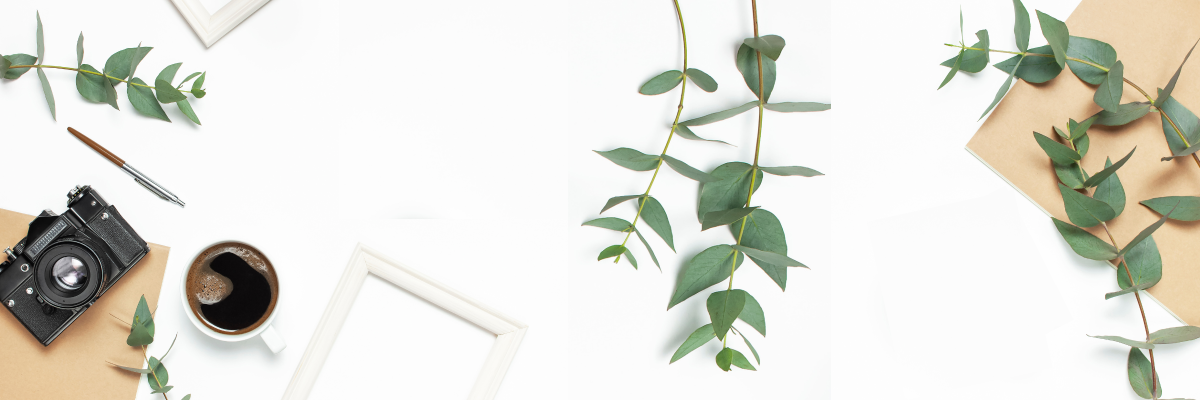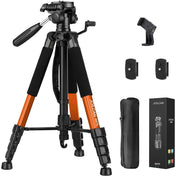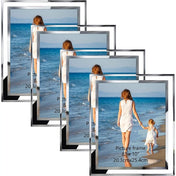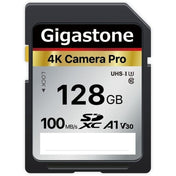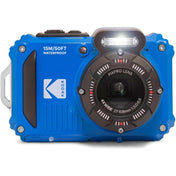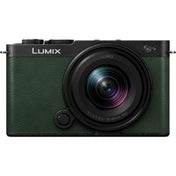Photography is a beautiful art form that allows us to capture moments, tell stories, and convey emotions through images. However, capturing the perfect shot isn't just about having a great eye; it's significantly influenced by the equipment we choose. One of the primary tools in a photographer's arsenal is their camera. The importance of camera selection in photography cannot be overstated, as it can dramatically affect the outcome of your work. In this article, we'll explore why picking the right camera is vital, what you should consider when making your choice, and how a camera like the Kodak PIXPRO FZ55 can fit into your photography journey.
The Basics of Camera Types
Before diving into the specifics of camera selection, it's essential to understand the different types of cameras available on the market. Each type has its advantages and disadvantages, impacting your photography style, comfort, and outcomes. Below are the prevalent camera types you might consider:
DSLR Cameras
Digital Single-Lens Reflex (DSLR) cameras are hugely popular among both amateurs and professionals. They offer excellent image quality, versatility, and the ability to change lenses. DSLRs excel in low-light conditions, making them a favorite for landscape and portrait photographers.
Mirrorless Cameras
Mirrorless cameras are a newer technology, providing similar features to DSLRs but without the bulk. They are generally lighter and more compact, making them great for travel and street photography. Additionally, they often have faster shutter speeds, which can help in capturing action shots.
Point-and-Shoot Cameras
Point-and-shoot cameras are perfect for beginners or casual photographers. They are compact, easy to use, and provide good quality images without much fuss. However, they have limited features compared to DSLRs and mirrorless cameras, which can restrict creativity.
Smartphone Cameras
With the advancement of technology, smartphone cameras have become a feasible option for everyday photography. While they may not replace professional cameras entirely, they offer incredible convenience and accessibility, allowing you to capture spontaneous moments with ease.
Factors to Consider When Selecting a Camera
Choosing the right camera involves careful consideration of various factors to ensure it aligns with your photography goals. Here are some key components to keep in mind:
1. Purpose and Style
What will you primarily use the camera for? Different photography styles require different features. For instance, if you are interested in wildlife photography, you would benefit from a camera with a fast autofocus system and high burst rates. Alternatively, for landscape photography, you may want a camera with good resolution and dynamic range.
2. Budget
Your budget is a crucial factor in camera selection. Cameras can range from a couple of hundred dollars to several thousand, depending on their capabilities. Consider what features are most important to you and find a balance that meets your needs without breaking the bank.
3. Size and Weight
How portable do you need your camera to be? If you enjoy hiking or traveling, a lighter camera may be more suitable. Conversely, if weight isn't a concern and you want the best features, a larger camera body may be worth the investment.
4. Lens Compatibility
The ability to switch lenses is a significant advantage of DSLRs and mirrorless cameras. This versatility allows photographers to experiment with different styles and effects. Ensure that the camera you choose has compatible lenses that fit your photography preferences.
Understanding Sensor Size
The camera sensor plays a vital role in image quality as it determines how much light the camera can capture. Generally, the larger the sensor, the better the image quality. Cameras come with a variety of sensor sizes, from full-frame and APS-C to micro four-thirds and single-inch sensors. Here are some insights:
Full-Frame Sensors
Full-frame sensors capture more light, resulting in better image quality, particularly in low-light conditions. They provide a wider view, which is excellent for landscape and architectural photography.
APS-C Sensors
APS-C sensors are smaller than full-frame but still offer high-quality images. They are often found in entry-level DSLRs and mirrorless cameras, making them ideal for hobbyists who want professional features without the price tag.
Micro Four-Thirds Sensors
These sensors are compact and lightweight, allowing for smaller camera bodies and lenses. They still provide excellent image quality and are often found in travel-friendly mirrorless systems.
The Benefits of Choosing the Right Camera
By selecting a camera suited to your photography style and needs, you can greatly enhance your photographic journey. Here are some benefits to consider:
Improved Image Quality
A well-chosen camera allows you to capture sharper, more vibrant images. This can significantly elevate your portfolio and your overall satisfaction with your work. For example, both amateur and professional photographers using models like the Kodak PIXPRO FZ55 have noted its capability in producing striking images.
Creative Freedom
When armed with the right camera, your creativity flourishes. You’ll be more willing to experiment with different settings, techniques, and styles, enhancing your skills as a photographer.
Enhanced User Experience
The right camera feels comfortable in your hands and allows you to focus on what truly matters - capturing stunning images. Whether you're a seasoned pro or a newbie, a user-friendly camera can make all the difference in your photography journey.
How to Test a Camera Before Purchase
Before finalizing your camera selection, it's crucial to try the camera in person. Here are a few tips on how to get the best hands-on experience:
Visit a Camera Store
Nothing beats handling a camera before buying. Visit local camera shops to test out models. Pay attention to how the camera feels in your hands, the heaviness, and the ease of accessing controls.
Look for User Reviews
Online user reviews can provide valuable insights into camera performance and reliability. Learning from others’ experiences can help you make an informed decision.
Renting Equipment
If possible, consider renting the camera for a weekend. This allows you to test its features in real-world settings without a long-term commitment.
Common Mistakes to Avoid in Camera Selection
When it comes to camera selection, avoid making these common mistakes that can inhibit your photographic growth:
Buying Based on Trends
Just because a specific camera is popular doesn't mean it's the right fit for you. Focus on your needs and preferences rather than what everyone else is using.
Underestimating Future Needs
While it’s crucial to meet your current needs, consider your ambitions for the future. A camera that suits your skills today may not accommodate your growth as a photographer in a few years.
Neglecting Accessories
Cameras often require accessories such as lenses, tripods, and filters to maximize their potential. Be mindful of the extra costs associated with these items when selecting your camera.
Finding Your Perfect Match
The photography landscape is filled with various options when it comes to cameras. Whether you’re drawn to the simplicity of point-and-shoot cameras or the advanced features of DSLRs and mirrorless options, finding the right fit for your style is essential.
Remember, your choice should reflect your vision, your photography goals, and your personal preferences. A camera like the Kodak PIXPRO FZ55 might be an excellent addition to your collection due to its user-friendly design and flexibility.
Elevate Your Photography Journey
Ultimately, the importance of camera selection lies in its profound impact on your photography. Making a well-informed choice can significantly enhance your skills and satisfaction with the art form. By understanding the different camera types, considering your specific needs, and being cautious about common pitfalls, you can pave a smooth path toward becoming the photographer you've always dreamed of being. Happy shooting!
Explore another user's Shopify or Wix store by following this link to their store. Keep in mind that this is a promotional link, and we assume no responsibility for the content of the linked store.

